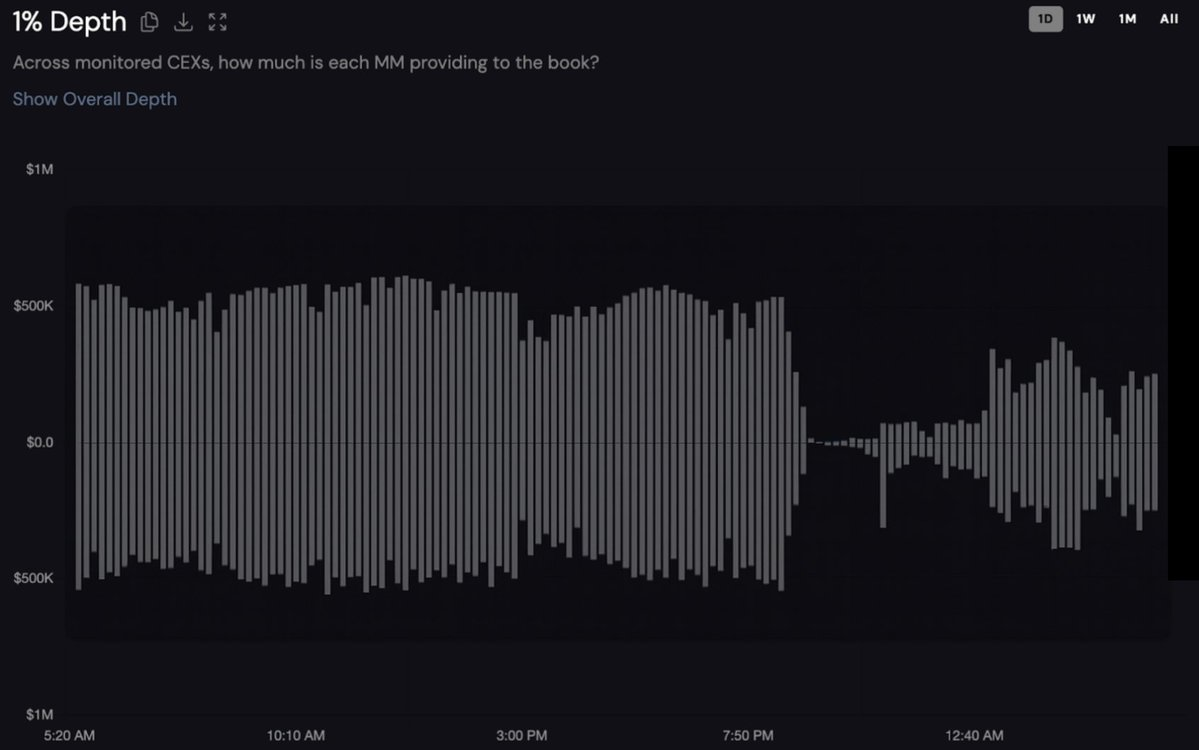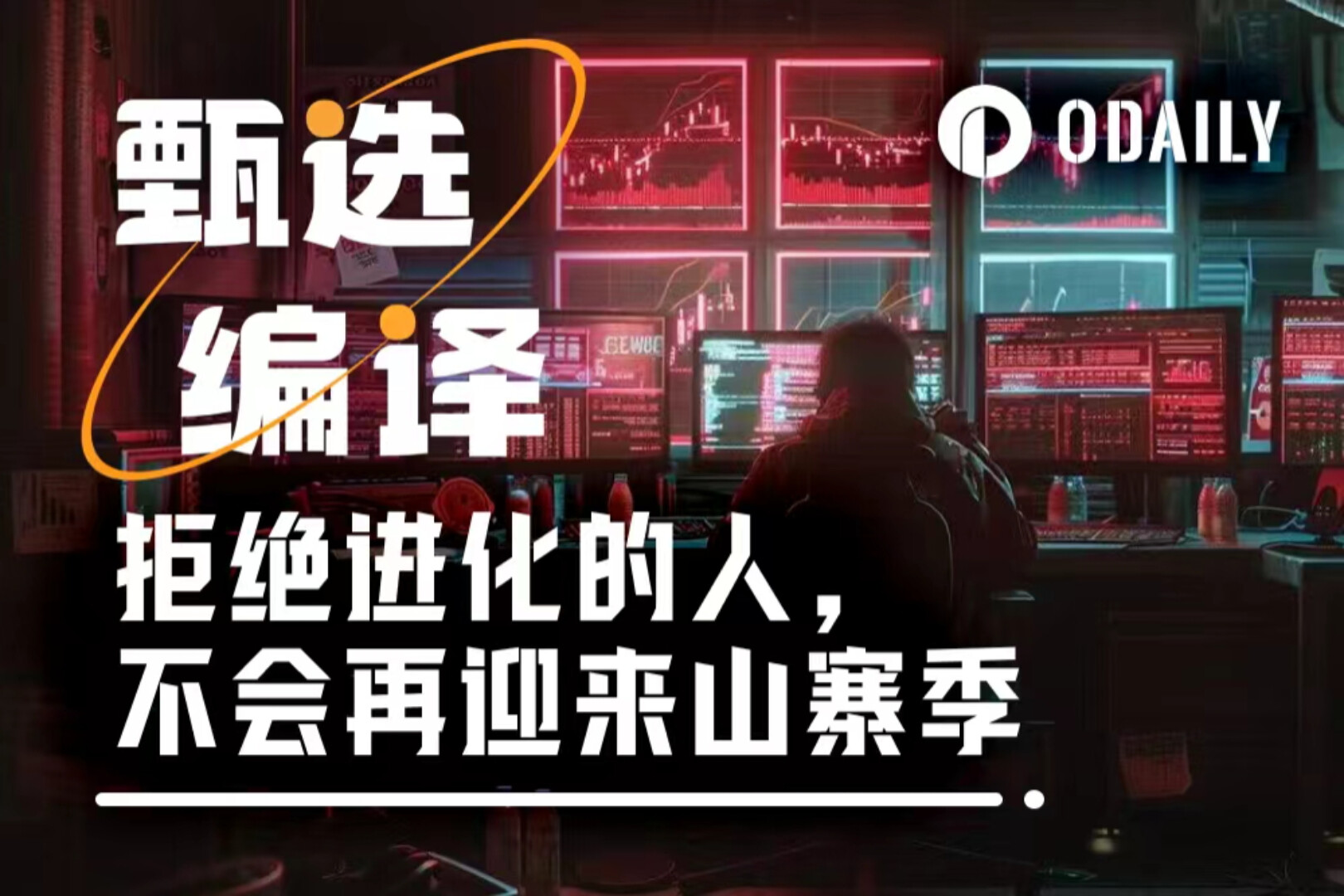Original author: YQ
Original translation: TechFlow
In my three previous analyses of the October 10-11 cryptocurrency liquidation storm, I explored oracle failures, infrastructure collapse, and potential coordinated attack vectors. Today, I’ll focus on perhaps the most critical, yet underappreciated, aspect: how market makers—the very entities that are supposed to provide market stability—became the primary catalyst for creating an unprecedented liquidity vacuum, turning a manageable correction into a $19 billion catastrophe.
Understanding Market Makers: The Difference Between Theory and Reality
Before analyzing the October crash, it's important to understand the theoretical function of a market maker. In traditional financial markets, market makers act as intermediaries, continuously providing buy and sell quotes for financial instruments. They profit from the difference between these prices while providing a crucial service: liquidity.
In theory, the roles of a market maker include:
- Continuous price discovery : by maintaining a two-way quote that reflects fair market value
- Liquidity provision : ensuring traders can buy and sell at any time without significantly affecting prices
- Volatility Easing: Absorbing Temporary Supply and Demand Imbalances
- Market efficiency : Maintaining uniform pricing by arbitrage price differences across platforms
In cryptocurrency markets, market makers operate similarly to traditional markets but face unique challenges:
- Runs 24/7, no downtime
- Liquidity is fragmented across hundreds of exchanges
- Extreme volatility compared to traditional assets
- Restrictive regulatory oversight and obligations
- Technical infrastructure required for high-frequency trading
Under normal market conditions, this system works relatively well. Market makers profit from modest spreads while providing necessary liquidity. However, the events of October 10-11 revealed the consequences when incentives and responsibilities are misaligned.
Timeline of Liquidity Disappearance
The precision with which market makers pulled out during the October crash suggests a coordinated response, not a simple panic. Here’s a detailed timeline of the liquidity disappearance:
- 8:00 PM UTC (4:00 PM EST) : Trump officially announced on social media that he would impose a 100% tariff on Chinese imports. Bitcoin's price began to fall from $122,000. Market makers maintained their positions but began widening spreads—a standard defensive move.

A two-way 1% depth chart of an unnamed token on Binance over the past 24 hours. Buy orders are below the x-axis, while sell orders are above it. Data source: Coinwatch
- 20:40 UTC : Real-time tracking data shows the beginning of a catastrophic liquidity withdrawal. On one major token, market depth begins to drop sharply from $1.2 million.
- 21:00 UTC : A key turning point. Macroeconomic conditions deteriorated sharply at the start of US trading. Institutional participants withdrew liquidity, bid-ask spreads widened, and order book depth thinned. At this point, market makers shifted from defensive positions to a full retreat.
- 21:20 UTC : The chaos reaches its peak. Amidst a wave of global liquidations, nearly every token hits bottom at this point. Market depth for tracking tokens drops to just $27,000—a 98% plunge. At $108,000, liquidity providers ceased defending prices, sending some altcoins plummeting by as much as 80%.
- 21:35 UTC : As the heaviest selling faded, market makers began to cautiously return. Within 35 minutes, bid-ask spreads on comprehensive centralized exchanges (CEXs) had recovered to over 90% of their pre-event levels—but only after the greatest damage had occurred.
This model reveals three key insights:
- Market makers have 20-40 minutes of warning before fully withdrawing.
- The liquidity withdrawal was synchronized across multiple companies.
- Liquidity is restored only after a profitable re-entry point emerges.
When insurance funds fail: the chain reaction of automatic deleveraging (ADL)
When market makers abandon their positions and liquidations flood order books, exchanges trigger their last line of defense: automatic deleveraging (ADL). Understanding this mechanism is crucial to fully grasping the full scope of October’s devastation.
ADL operating mechanism of centralized exchanges
ADL is the third and final tier in the liquidation hierarchy:
- First level - Order Book Liquidation : When positions fall below the insurance fund, the exchange attempts to liquidate them through the order book. If a successful liquidation is achieved at a price better than the bankruptcy price (insurance fund = 0), the remaining funds will flow into the insurance fund.
- The second layer - Insurance Fund : If the order book is not liquid enough, the Insurance Fund absorbs losses. This fund is accumulated from liquidation profits in normal times and acts as a buffer against bad debts.
- The third layer - Automatic Deleveraging (ADL) : When the insurance fund cannot cover the losses, the exchange will forcibly close the profitable positions on the other side.
ADL ranking system
Binance's ADL mechanism
Binance’s ADL mechanism uses a complex ranking formula: ADL ranking score = position profit and loss percentage × effective leverage
in:
- Position profit/loss percentage = unrealized profit / abs (notional value of position)
- Effective leverage = abs (notional value of position) / (account balance - unrealized losses + unrealized profits)
Bybit’s approach
Bybit’s approach is similar to Binance’s, but with added safeguards. They display your percentile ranking via a five-light indicator:
- 5 lights = top 20% (highest ADL priority)
- 4 lights = 20%-40%
- 3 lights = 40%-60%
- 2 lights = 60%-80%
- 1 light = bottom 20% (lowest priority for ADL)
The most successful traders—those with the highest profits and leverage—are the first to be forced to close their positions. This is the most brutal part of the ADL mechanism.
ADL disaster in October
The Auto-deleveraging (ADL) on October 10-11 was unprecedented in scale:
- Hyperliquid : Launched the first cross-insurance fund ADL in two years, affecting more than 1,000 wallets.
- Binance : ADL triggered widely.
- Bybit : Reported over 50,000 short positions were deleveraged, totaling $1.1 billion.
- BitMEX : An exception, with only 15 contracts triggering ADL, thanks to its large insurance fund.
The timing of ADL activation is highly correlated with the time when market makers retreat. Between 21:00 and 21:20 UTC, order book liquidity dries up and liquidations cannot proceed normally, forcing the insurance fund to be quickly depleted and triggering ADL.
Case Study: The Disastrous Impact of a Chain Reaction
Here's what a typical hedge portfolio experiences during those crucial 35 minutes:
- 21:00UTC : Traders hold:
- BTC long : $5 million, 3x leverage
- DOGE short : $500,000, 15x leverage (profitable hedge position)
- ETH long : $1 million, 5x leverage
- 21:10 UTC : Market makers retreat, DOGE prices plummet, and short positions become very profitable. However, due to the combination of high leverage and profits, ADL is triggered.
- 21:15UTC : DOGE short positions were forced to close, and the portfolio lost hedging protection.
- 21:20 UTC : After losing their hedge, BTC and ETH long positions were liquidated in a chain reaction. Final loss: the entire portfolio was reduced to zero.
This pattern repeated itself thousands of times in the market, with many carefully balanced positions being forced closed by ADL, resulting in the loss of hedge protection and subsequent liquidation of exposed long or short positions, leading to devastating losses.
Why Market Makers Fail: A Problem with Incentive Mechanisms
The simultaneous withdrawal of liquidity exposes a fundamental structural problem. Market makers face multiple incentives to abandon the market:
- The asymmetry of risk and reward: During periods of extreme volatility, the potential loss from maintaining quotes far exceeds the spread profit under normal circumstances. A market maker providing $1 million in quote depth might earn $10,000 in spread profit during normal times, but could face losses of up to $500,000 during a market crash.
- Market makers with an information advantage can see the overall order flow and position distribution. When they see a significant bullish bias in the market (87% of positions are long), they know the direction of the crash. Why would they offer buy quotes if they knew the impending sell-off was imminent?
- Unlike traditional exchanges, where designated market makers are often subject to regulatory requirements, market makers in the cryptocurrency market can withdraw at any time. There is no penalty for abandoning the market during a crisis.
- Arbitrage opportunity collapse data shows that retreating market makers turned to arbitrage between exchanges. When the price difference between different platforms exceeds $300, arbitrage trading is much more profitable than traditional market making activities.
Destructive feedback loops
The interaction of market maker withdrawal and automatic deleveraging (ADL) created a disastrous feedback loop:
- The initial shock (Trump’s tariff announcement) triggered a sell-off;
- Market makers sense a potential crash and choose to retreat;
- Liquidations cannot be completed normally with an empty order book;
- Insurance funds were rapidly depleted to absorb bad debts;
- ADL is activated, forcibly closing profitable positions;
- Deleveraged traders are forced to re-hedge, increasing selling pressure;
- More liquidations are triggered, looping back to step 3.
This cycle continued until leveraged positions were almost completely wiped out. Data shows that overall open interest in the market fell by about 50% within hours.
The truth about market structure
The disaster of October 10-11 was not primarily caused by excessive leverage or regulatory failures, but by misaligned incentives in the market structure. Chaos is inevitable when the actors responsible for maintaining market order profit far more from chaos than from stability.
Timeline data shows that market makers did not panic, but instead executed a coordinated retreat at the optimal moment to minimize their own losses while maximizing subsequent opportunities. This rational behavior under the current incentive structure led to irrational results for the market as a whole.
Rebuilding trust through accountability
The October 2025 liquidity crisis revealed a key weakness in the cryptocurrency market: voluntary liquidity provision failed when mandatory liquidity support was most needed. The $19 billion in liquidations was not simply the failure of over-leveraged traders but the inevitable consequence of a systemic problem—market makers enjoyed all the privileges of liquidity provision without any of the responsibilities.
The path forward requires acknowledging that a purely laissez-faire market-making mechanism will not work during times of stress. Just as traditional markets evolved from the chaos of unregulated trading to the introduction of circuit breakers, position limits, and market maker obligations, crypto markets must implement similar safeguards.
Technological solutions already exist:
- Hierarchical responsibility system : linking benefits with responsibilities;
- The size of the insurance fund should match the actual risk : avoid overly optimistic forecasts;
- ADL mechanism combined with circuit breaker mechanism : prevents liquidation chain reaction;
- Real-time transparency into market maker behavior : enhancing trust.
What’s missing is the will to implement these measures. Unless crypto exchanges prioritize long-term stability over short-term fee revenue, similar “unprecedented” events will continue to occur with depressing frequency.
The 1.6 million accounts liquidated on October 10-11 paid the price for this structural failure. The question is whether the industry will learn from their sacrifice, or continue to wait for the next wave of traders to find that when the crisis hits, the market makers they relied on have disappeared in smoke, leaving behind only a chain reaction of liquidations and forced liquidations of profitable positions.
The above analysis is based on available market data, cross-platform price comparisons, and established patterns of market behavior. The views expressed in this article are solely personal and, while inspired by relevant information, do not necessarily represent the views of any entity.
- 核心观点:做市商撤退引发流动性真空导致市场崩溃。
- 关键要素:
- 做市商同步撤离加剧流动性枯竭。
- 自动去杠杆机制触发连锁清算。
- 市场激励错位致做市商放弃责任。
- 市场影响:暴露加密市场结构脆弱性需改革。
- 时效性标注:中期影响



